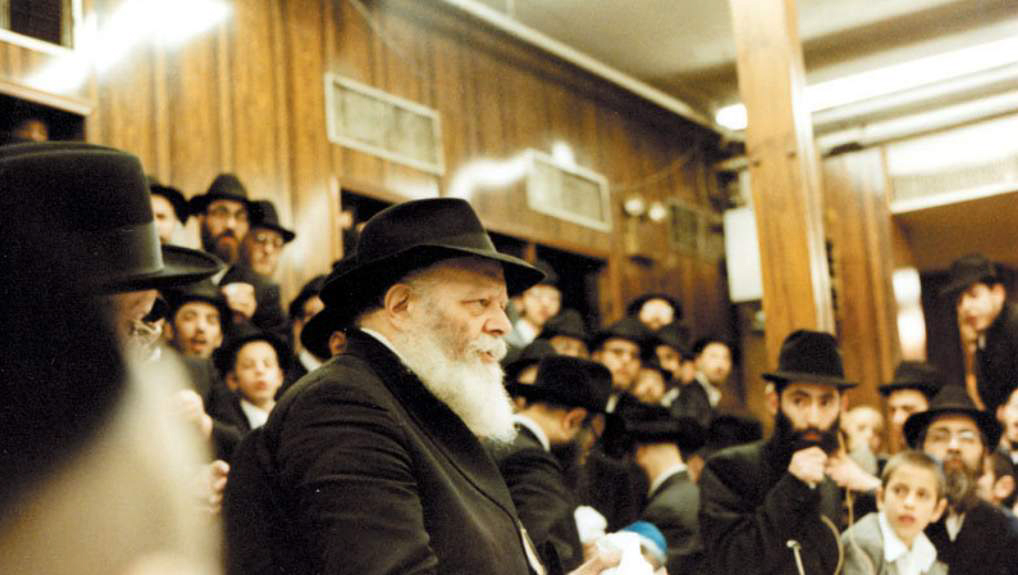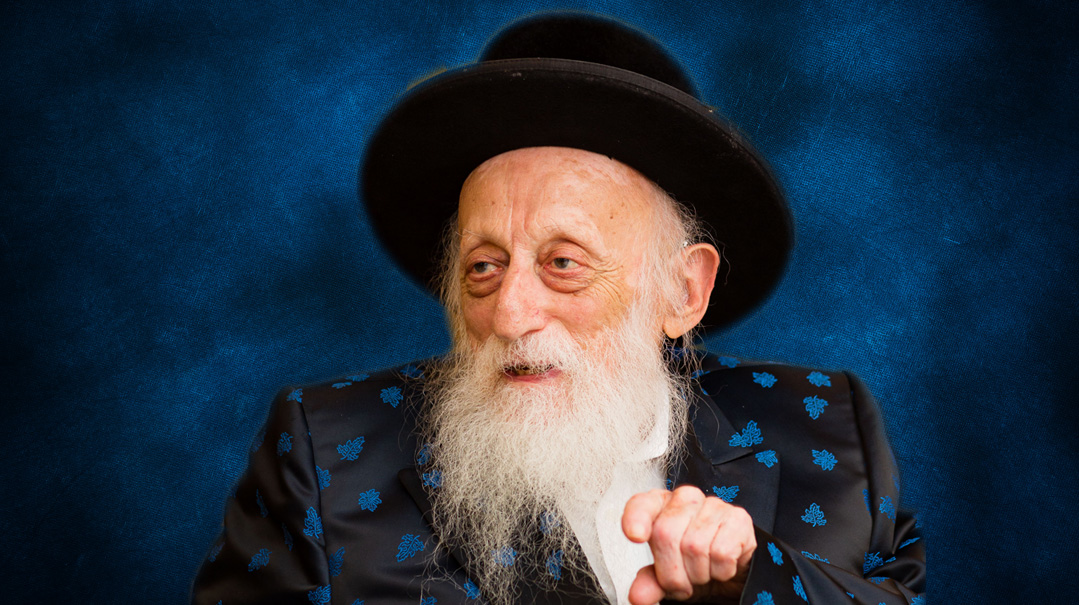Fly Above Fear

Two grown women, each paralyzed with fear at the thought of boarding a plane. A therapist uses innovative techniques to uncover the layers beneath the phobia and enables them to heal

Yudit
I
was always a good, quiet kid. I never got into trouble, never had “issues.” And being the good kid that I was, I never woke anyone up at night, even as I lay in bed, eyes wide open and trembling in fear. Instead I’d lie still, gripping my quilt and holding my breath, every nerve in my body on high alert.
Many children are afraid of the dark. But there’s fear and there’s fear. My fear was the kind of fear people experience at gunpoint. And that was on an average night, when darkness was the only trigger for my terror.
When scary things happened in the world, my fears scaled to impossible heights. Names of criminals haunted my psyche, the fiendish people in the news as real to me as my neighbors. Every rustle sent my heart racing, every shadow was a monster.
When I was ten years old, our community was thrown into a panic at the news of the abduction of a Jewish girl. The girl was missing for several days and askanim worked feverishly to rescue her. Everyone was frantic, and when the girl was finally found, everyone exhaled with relief.
Not me. I walked around haunted. When I came out of the shower, I traced the girl’s name on the fogged mirror. I whispered it. I thought about it. About her. About every scary thing in the world. Silently, I took in everything around me, inviting the world’s troubles to rest on my fragile shoulders.
Nobody knew. Through it all, for years and years, I was a good, quiet kid.
Eventually, the fears faded. Like most childhood habits, I figured I’d outgrown that stage and become a more mature, realistic person. True, I was still afraid to ride trains and elevators, but as long as I avoided those, I was fine. I moved on, got married, and started raising a family.
When my husband’s sister Chana got engaged, my husband suggested we fly rather than drive to Chicago for the wedding.
“No way,” I responded promptly.
Yaakov looked at me. “Um, okay. But why not?”
“I don’t fly.”
I said it the way a person says, “I don’t eat treif.” It was such an obvious fact, I’d never given it thought.
Yaakov didn’t think it was so obvious. Flying to the wedding would save us tons of time. “Are you sure?” he prodded.
I’d never flown before. It never dawned on me to try. Airplanes were scary. Flying was beyond my ability.
And yet, everyone was flying. What was my excuse?
“I want to fly,” I said at last. “But I’m terrified to do it.”
Dina
When I was in seventh grade, my brother got engaged to a girl from London. In addition to the excitement of having a wedding in the family, I had the glamor of flying overseas for two weeks.
My friends decorated a large calendar, circling the date of my scheduled departure in bright red. “You’re so lucky,” they whined throughout the weeks of the exciting countdown.
I didn’t feel lucky. Frankly, I wished I could shred my ticket to bits or raffle it off among my jealous classmates.
I begged my parents to let me stay behind. “I can stay with the Weisses while you’re away. Blimie Weiss stayed with us when her parents went to Eretz Yisrael.”
My mother was aghast. “Dina! Mendy is getting married. You really want to miss his wedding?”
I wanted to be there, but I didn’t want to fly there. I simply couldn’t get onto that airplane. If I did, I was one hundred percent sure the plane would crack in half. Every time I visualized the impending flight, which was about seven times a minute, the picture ended in tragedy. Fear took over my life. I couldn’t eat or sleep for weeks.
My parents were flummoxed. No matter how many times and in how many ways they tried proving how irrational my fear was, their arguments fell on deaf ears. At one point I turned to my mother and said, “Look, Ma, if I stay behind, you’ll save so much money on my ticket. Could you please cancel it?”
Considering my parents’ comfortable finances, it was a weak argument. “I know you’re afraid of flying,” she said. “But seriously, once you’re sitting on that plane, you’ll see it’s nothing. It’s like a bus ride, nothing more. By the time we land, you’re going to laugh at how irrational your worries were.”
I didn’t laugh, but I survived the trip. I was nauseous for days before the flight, and I couldn’t hold down any food. I was terribly agitated when we boarded and ate salty pretzels, which for some reason helped me relax. Turned out, it was a smooth flight and a lot less frightening than I’d imagined.
But then came the return trip, and my worst nightmares materialized. The plane shook violently. A couple of boys who were smoking in the rear of the plane came tumbling down the aisle. The flight attendants buckled up, visibly afraid. Passengers were screaming, things flew through the air, someone yelled Shema Yisrael.
My body turned to jelly. My eyes were squeezed shut, I couldn’t breathe. I couldn’t even scream. Fear crawled through my blood as I braced for the plane to nosedive.
By some miracle, we landed safe and sound. And as soon as my feet were back on terra firma, I vowed: I would never step onto an airplane again.
After my seventh grade flying fiasco, I stayed away from the airport. It didn’t matter that I was an adult now, a mother of a growing family. I didn’t fly, end of story.
For years, my mother pressured me to join her on a trip to Florida. I always furnished excuses. A sick child, a wedding. Somehow, last winter, she managed to convince me.
In the airport, my sensitivity went into overdrive. I was so severely alert I could’ve been a TSA agent. The flight was a disaster. The plane tumbled through the air, shaking wildly. I watched a person sleep through the turbulence and thought, How? I was certain we wouldn’t arrive in one piece.
The moment we landed, I called my husband. “I’m not flying home,” I said firmly. I begged him to come and drive me home. That obviously wasn’t practical. But how could I manage to board a plane again?
That’s when I got in touch with Malki.
Malki Spira, LMHC
Most clients enter therapy with a straightforward goal. “I struggle with issue XYZ. Dear therapist and miracle worker, please help me master this challenge and live happily ever after.”
Therapy is not medicine. Before suggesting a program, therapists need to spend time getting to know their clients, exploring their histories, and figuring out the roots of their problems.
When I started seeing Yudit, I realized we had to reframe her perceived “problem.” While she presented with a fear of flying, it was obvious that this fear was a symptom of something deeper. Yudit described a history of fear, which indicated that these emotions were embedded in her psyche.
She shared memories. Her mother leaving the house at night without revealing her plans; Yudit imagined the worst, afraid she’d never see her mother again. Another memory was of a time when she was stuck in an elevator with several family members. Everyone was somewhat anxious, but Yudit’s face was green and she had nightmares for months after that incident.
I explained to Yudit that this particular fear, her fear of flying, was like a shield. It was there to protect her from something deep within her that was feeling frightened and helpless. My goal was to help her tap into that “something” and address it at its core.
One day, after I’d met with Yudit several times and started outlining a therapy plan, I got a phone call from a woman named Dina. “I’m in Florida,” she blurted out, “and I can’t fly home.”
I listened to her story. Like Yudit, Dina harbored a terrible fear of flying. She’d been airborne before, but the fear only intensified every time she had to fly. I knew we had to figure out where this fear stemmed from. But first, we had to get Dina back home.
Dina
We set up a makeshift therapy room over Skype. Malki supplied material — meditation recordings, relaxation techniques. It wasn’t your classic vacation. I didn’t go anywhere or do anything. I stayed in my room, Skyping with Malki, and diligently practicing the relaxation, meditation, and Cognitive Behavioral Therapy (CBT) skills she taught me.
It worked. As soon I landed back home in New York, I felt heady with excitement. I texted Malki that I was ready to tackle my fear of flying head-on.
Malki
The relaxation and CBT sessions helped Dina return home, but in order to permanently silence her fears, she needed to dig deeper, in a calm frame of mind. In Florida, she had been in panic mode and needed a quick-fix, Band-Aid solution. Now we could focus on the long-term.
Meeting Dina in my office for the first time, I outlined the same plan I was practicing with Yudit: Exposure therapy in conjunction with IFS-Parts Work. Exposure “exposes” hidden issues and brings them to the surface, and IFS (Internal Family System Model) would make her dive deep within her subconscious to help her recognize and ultimately heal the issues that came up through exposure.
The goal of exposure therapy is to rewire the brain to be able to face anxiety triggers calmly and to recognize that there’s no reason to be afraid. This can be accomplished by conjuring a person’s “trigger” in a safe environment (for example, imagining traveling on an airplane), allowing the fears to surface, and habituating the person to have the feelings and thoughts without reacting to them by avoidance, reassurance seeking, or a compulsive ritual.
IFS-Parts Work is typically used to identify childhood trauma, allowing a person to go back and heal issues at the core, so their life experiences don’t trigger extreme reactions in their system. In therapy, clients explore the many components within themselves, which meld as one into a complete personality, a Self.
While we tend to think of ourselves as unitary beings, every person is essentially a sum of parts. One part wants to wake up and get things done. Another part prefers to sleep. The Self is the entire entity, the leader of all parts. In a healthy system, all parts integrate under leadership of Self. In an unhealthy system, traumatized and extreme Parts will overtake Self, leading to problems.
“Think of the IFS Model like a family,” I told Dina. “There are many members who comprise the family entity. Parents, siblings, relatives. The unique dynamics of each member merge to establish an overall personality of a family. And your consciousness works the same way. There are many Parts within you — memories, emotions, traits, experiences — that fuse to form the entity, a Self, that is you.”
Clients are naturally curious when introduced to the IFS Parts modality. Admittedly, thinking about all these little personalities is a shift in our typical way of thinking. But IFS Parts Therapy is a researched-based program with empirical evidence, approved by the American Psychiatric Association. And though IFS is a relatively new modality, in the field of psychology, it’s quickly gaining popularity among practitioners.
Once Dina absorbed the IFS concept, she geared herself up for the work ahead. Slowly, we started the process, peeling away layers and reaching into her psyche to access hidden Parts. “We’re searching,” I explained to Dina. “We’re digging deep inside, searching for the root of your fear. There’s a trigger for your panic, a Part within you that invites fear, hoping to keep you safe by staying on high alert. We’re going to find that Part.”
Dina
Therapy is hard work. When I started, I felt like I was putting my emotions on the operating table, ripping them apart in search of infected elements. And like tinkering with wounds, it hurt. Malki explained how she was going to incite my fear by playing videos of scary flights on a tremendous screen. I watched the most nightmarish flight scenes, people and objects being tossed through the air as the plane convulsed. It was like sitting in an IMAX theater, feeling as though I was a passenger on the turbulent flight. She exposed me to my greatest fear, triggering the Panic Part in me.
During those sessions, startling memories surfaced; snippets from my youth, incidents I barely recalled. Some memories were completely unfamiliar to me, and I needed my mother to verify those stories. It was an odd experience. I was discovering Parts of me I never knew existed. And one of those Parts was Panic.
Malki helped me get to know my Panic Part and to understand its role in my system. “The Panic doesn’t mean to harm you,” Malki explained. “It’s a Protector Part who fears that if it won’t do its job and keep you vigilant, you won’t pay attention and something terrible will happen. Can you appreciate just how hard it works to keep you safe and comfortable? You don’t want to get rid of this well-meaning Part, but to gain its trust so it will calm down and allow your mature Self to take over.”
Doing this required intense work. I had to connect with the frightened little girl from my past, whose fear was activating the Panic Part to protect me. I needed to soothe her open wounds and coax her to give up her fear to the big girl I was now as an adult, so that her need for Panic would be quelled.
Malki
Dina and Yudit were determined and diligent clients. They worked hard, and after several weeks, they reached a point where they had each developed a relationship with various internal wounded Parts.
An interesting idea occurred to me. What would happen if I paired Dina and Yudit up for a joint quest of conquering their fears? A therapy chavrusa, if you please. It was unconventional, but the more thought I gave it, the more I felt they would benefit from this partnered learning.
Dina and Yudit were naturally hesitant when I introduced the idea, afraid of revealing their weaknesses to a stranger. But recognizing that they shared a unique struggle, they agreed to try it.
Yudit
It was weird at first, meeting a stranger and sharing my darkest fears. Both of us were squirmy. But as the session ensued, the awkwardness dissipated and we became a team, partners banding up against a common enemy.
The session was dramatic. Malki dimmed the lights and we geared up for the simulated flight. Suddenly the neat little office no longer felt like a safe place. We were soaring on an airplane and my heart started racing. Before long, I was sweating and panting.
Malki whispered, “Breathe. Breeeeathe.”
I tried breathing. The plane was shaking. People were screaming. Things were flying through the air — plates, spoons, humans. I felt faint.
Malki guided me, probing, questioning, trying to get to the bottom of what lay under this intense fear.
Then I was transported. I was a baby, and I was lying in the water, face down. It was a pool — water — I was drowning. My arms flailed, I couldn’t breathe. I kicked and sputtered and thrashed. I started going down. I was dying.
My mother grabbed me out of the water. I gasped and wheezed, struggling for breath. And then I snapped back to the present.
The entire episode lasted a few seconds, but I was shaking.
When I calmed down, Malki encouraged me to try and process the memory. My life had been saved, true, but the trauma of the experience was like a raw wound, bleeding in my subconscious. I’d never reached closure. The baby in me lived in a perpetual state of terror.
“Let’s help Baby Yudit heal,” Malki said. “Go back into that tableau and ask Baby Yudit what she needs to feel safe. Give it to her. Hold her. Shake her. Rock her. Don’t rush. Sit with her as long as it takes.”
I replayed the experience, listening to Baby Yudit. I focused on staying calm despite Baby’s intense feelings and reactivity. I heard Baby’s story and tried to heal her trauma by providing for her emotional needs. We did some physical exercises, with me kneeling down to her and synchronizing my breaths with hers, so that we were one: mature, logical adult and frightened little baby. And by erasing the baby’s fears, I was erasing the fears from my subconscious, fears that had clung to me for so many years.
Malki
The near-death drowning experience was embedded in Yudit’s subconscious and had molded this Part of Yudit’s personality. Yudit had never thought about this story, never had nightmares or panic attacks directly related to it. But the fear was engraved in her core, and addressing it through Parts Work allowed her to bring it up and release its grip.
Now, a “reparented” version of the story overrode the buried trauma. The memory remained, but the terror was gone. Baby Yudit felt safe, connected to “Big Yudit.” She was now able to unburden herself of this historic trauma and relieve the Protector Part of its extreme task — keeping her hypervigilant toward risk.
During another “flight,” Dina broke down.
Dina
I was in my parents’ fabric store. My mother was standing behind the register. There was a space between the register counter and the table where the fabrics were cut. I stood in that space, and suddenly, a huge man walked in, threw me down and walked right over me. He withdrew a gun. I watched as my mother shakily handed over money.
Was this story true? I wasn’t sure — I only had a vague recollection of the experience. After that session, I called up my mother to question her. “You were glued to my side for the next three months,” my mother recounted. “I couldn’t calm you down. The robbery haunted you.”
Malki encouraged me to dig into the memory and soothe Little Scared Girl. With her encouragement, I coaxed the feelings out of the little child. It was a little weird, my adult mouth conversing with my little self of years ago. I encouraged her to share her innermost feelings of fear, and I listened and provided for her needs.
“It’s okay, you’re alright now, nobody’s harming you. Big, Mature Dina is here.” By tuning in to her voice, I was able to provide Little Scared Girl with the reassurance she had needed back then. In doing so, I took her out of the traumatic past, unburdened her of her fear, and brought her into a safe present with Big Dina.
This helped me reach new levels of serenity. There was no reason to cling to that dusty memory with such fear. It was time to let go.
Malki
During every session, more memories were replayed. Yudit’s memory of lying in bed, alone and terrified, came up a lot. It was a bolt of lightning for her, to so vividly feel that childhood fear again, as though it was happening in real time. She couldn’t believe she was still carrying that memory. I guided her to sit next to Little Yudit’s bed and soothe her. It was emotionally cleansing.
As part of the homework exercises, Yudit exposed herself to triggers by riding trains and elevators. She practiced engaging with inner Parts while in those exposed environments. Later in the office, we replayed her experiences, sorting her feelings and working through the panic.
After weeks of intensive therapy, accessing and healing the frightened inner child, I felt they were ready for a real flight.
Dina
I entered the airport terminal excited but apprehensive. We were flying from New York to Boston, a short flight that would ease us into the experience.
The effects of therapy were already evident in the airport. For the first time in my life, I was able to tune out the people around me. I didn’t slip into my typical high-alert mode, because Malki grounded me, helping me remain calm and focused.
As we advanced toward the gate, Malki kept up a constant dialogue. She wanted us to remain aware, not to deny what was happening. The idea was to experience everything through a levelheaded mind frame.
Shortly into the flight, while Malki played soft music recordings, a memory surfaced. I was a little girl, maybe two years old. My parents were away, and I was staying with family friends. There was a spot on the porch, an odd circle. I stared at it, describing it in detail. I broke down, sobbing.
Malki held my hand. “What does Baby Dina want?” she asked me. I hugged my bag, my association of that small, frightened child. And I soothed Little Dina, assuring her that her parents would return and collect her — and that she can rely on me, Big Dina, to always be there for her and to take care of her.
Yudit
Having a partner was a game changer. Having someone relate to my feelings made everything easier. It also gave me space. When Malki engaged with Dina, I was able to be in my own head and freely explore my emotions.
For me, it was the first flight I took in my life. I expected a stomach-dropping sensation to accompany me. I was sure I would hold my breath throughout the entire flight. Surprisingly, I felt calm. It was much easier than I thought.
Stepping off that airplane was like reaching the summit of Mt. Everest. It was exhilarating. We did it, we flew.
Malki
Their debut flight left Yudit and Dina feeling empowered. I sat between them during the flight. In the beginning, the tension was huge. Yudit and Dina took turns working with their Parts. They did deep, introspective work, shifting between tension and peace. It was an intense experience.
For the IFS therapy modality to be effective, practice is crucial. Clients need to keep connecting to their traumatized parts to both heal them and to allow their Parts to grow accustomed to their new roles, led by their mature adult Self. I constantly scouted Expedia for good deals, and shortly after our first flight, I found cheap tickets to North Carolina.
Dina did very well on that second flight, but Yudit was a mess. When the plane started shaking, she lost control and started crying. He hands trembled and she gripped the armrest. The association was stunning. Gripping armrest, gripping blanket. The trauma of her childhood fear was so strongly imprinted on her subconscious, the gripping reaction was instinctive.
But she didn’t let that get her down. She accessed her adult Self, soothed the Little Scared Girl, and did amazing on the return flight. She arrived home feeling very proud of herself.
The true experiment, however, took place on their first independent flights, without a therapist accompanying them.
Yudit
I’d worked incredibly hard throughout my sister-in-law’s engagement. Although I’d done well, I was nervous about flying without Malki. It would be only me and my husband on the flight to Chicago. This was the real test.
I spent a lot of time preparing for the flight. I practiced the techniques Malki had taught me and loaded session notes and meditation recordings on my iPod. But man plans… The plane took off and my iPod wouldn’t power up. I was left unequipped, thousands of feet in the air.
I remained strong. I’ve done this with Malki and Dina, I told myself. I can do it again, on my own. The flight went smoothly and I was able to remain calm throughout. It was tremendously liberating.
Dina
My first independent flight was a long one. I had a simchah in Switzerland. I was uptight during the first hour. Then I told myself, “This is it. You’re prepared. You can do it.”
I was fine. No heart racing, no hypervigilance, no pretzels. I was just another passenger on the plane. Two passengers, actually: me and Little Dina, whom I was peacefully holding until she “fell asleep” on my lap. In the past, my Panic Part would have taken over my system. Now, it was soothed and healthily integrated into my leading Self.
On the return flight, the plane had a difficult landing. And, still, I was totally fine.
The excitement of reporting my success to Yudit was incredible. She’d been with me throughout my most vulnerable moments. We’d forged a unique relationship, bonding through our joint venture. Along with my newfound confidence, I’d earned a true friend.
Malki
Yudit and Dina believed their wings were clipped by fear. But by strengthening their adult Selves and encouraging each other to cleanse buried traumas, they learned to spread their wings — and fly.
(Originally featured in Family First, Issue 647)
Oops! We could not locate your form.










